The original X100 was a game changer, the dial-controlled classic body built around an APS-C sensor kicked off the X-Series success story. I got myself the second model, the S, and carry it with me all the time. This year Fujifilm came out with the fifth iteration. While the body got a facelift, a new, sharper version of the already excellent 23mm was added, as well as a bunch of options to fine tune the cameras behavior. Hamish posted an in-depth analysis about all the menu functions and buttons you can assign them to here, so I will not get into these details. Instead, I want to talk briefly about how I use the V in my daily routines.
While the good old X100S, and T and F, looked like our grandparents old Leica, the Vs body is a sleeker, streamlined affair. You see it, and you feel it in your hand. Masazumi Imai carefully re-designed the X100V for Fujifilm, and his inspiration came from the work of visual futurist Syd Mead (Blade Runner) as well as the Phantom F4 fighter jet. Don’t worry, the V hast not veered that much from it’s family tree, the articulated touch display is the most obvious change. Other highlights are the really sharp Super EBC 23mm f/2 mk II lens and the practical ability to be charged by USB-C.
While I never missed an articulated display on my X100s, I have to admit this one is perfectly integrated into the body, sitting flush on the back with only a tiny slot giving away its agility. While you can place AF-points and take pictures with the tip of your finger, swipes allow you and abundance of functions.
So how does the V perform on the streets?
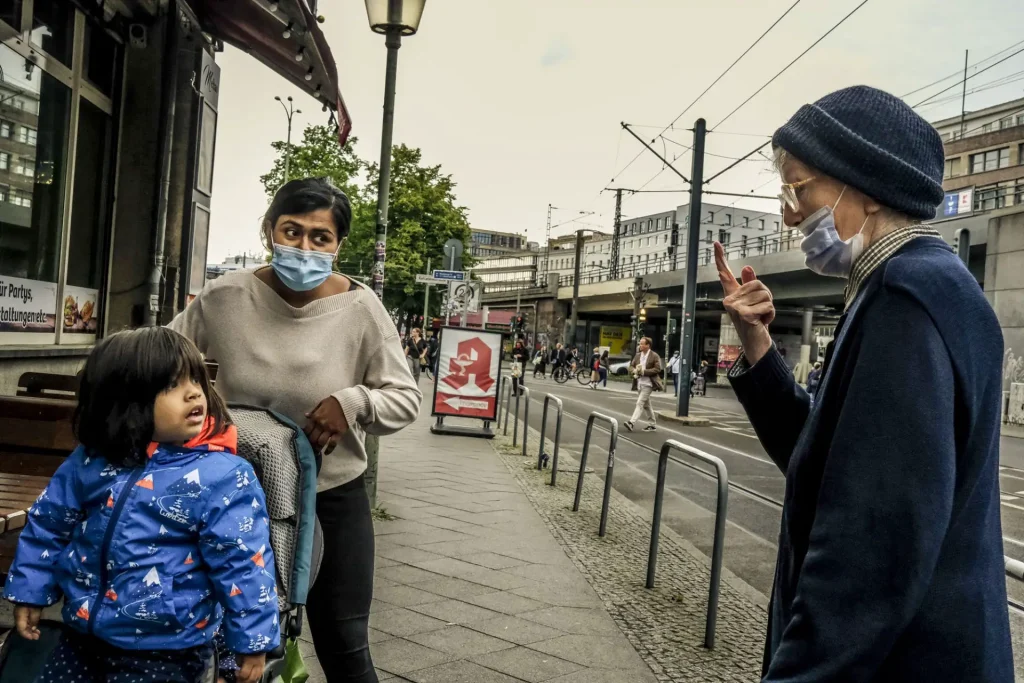
This lady informed the kid about the virtues of distance and mask. I was standing next to them with the X100V and was completely ignored because of the form factor, and the silence (even with the mechanical shutter engaged).

Germany was so far quite successful with its handling of the pandemic, only some fringe groups used the opportunity to protest against the government measures. A counter movement formed quickly, which the gentleman with the crocodile hat is part of. I was able to approach closely while using the cameras display, and not the viewfinder.
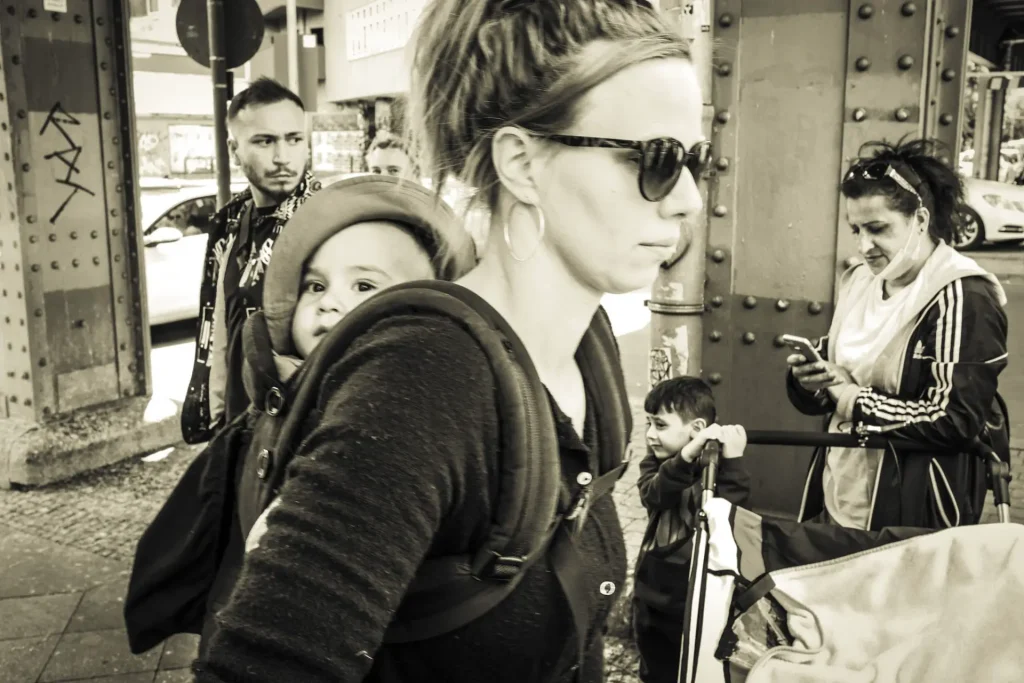
The X100V viewfinder is able to display the depth of field pretty accurately, and the menu allows you to switch from pixel based to film based view (in which a blue bar shows you the extent of the area in focus). In this case I used manual focusing at f/8 with a 1/125sec and ISO 3200. I brought the camera up just to frame the image, not checking the focus.
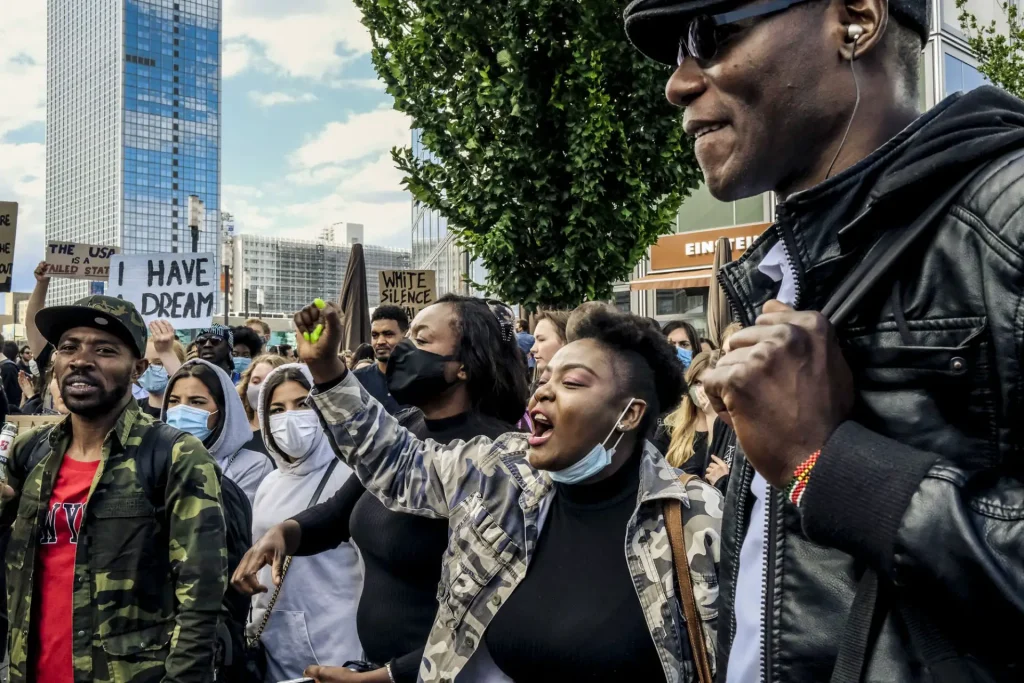
Like all over the globe there were huge BLM rallies in Berlin, with thousands attending. The X100V allows you to get close to the action,while people assume you to carry your grandmothers undisturbing rangefinder from the 1950s around.
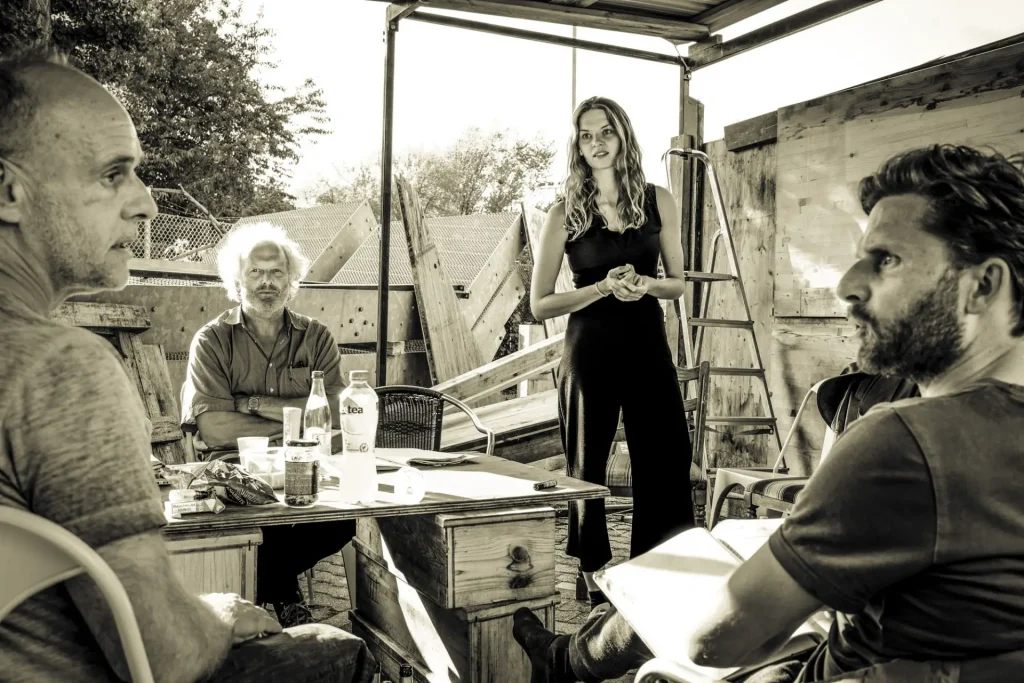
Like London, Berlin has its own Shakespeare’s Globe Theater. While the wooden construction is still being erected, rehearsals began for the 2020 production of ‘The Tempest’. This is a backstage situation in which actors and director read the text for the first time. In this case I used the electronic shutter, with everybody wondering about me fiddling with the camera without taking pictures.
The X100V, created with the legacy of a visual futurist in mind, follows Fujifilm’s tradition of building highly practical tools with excellent sensors and processors that you just want to grab and take to the street. This perfect tool for candid street photography is no exception, and the display is a highly useful addition to the X100 line.
Share this post:
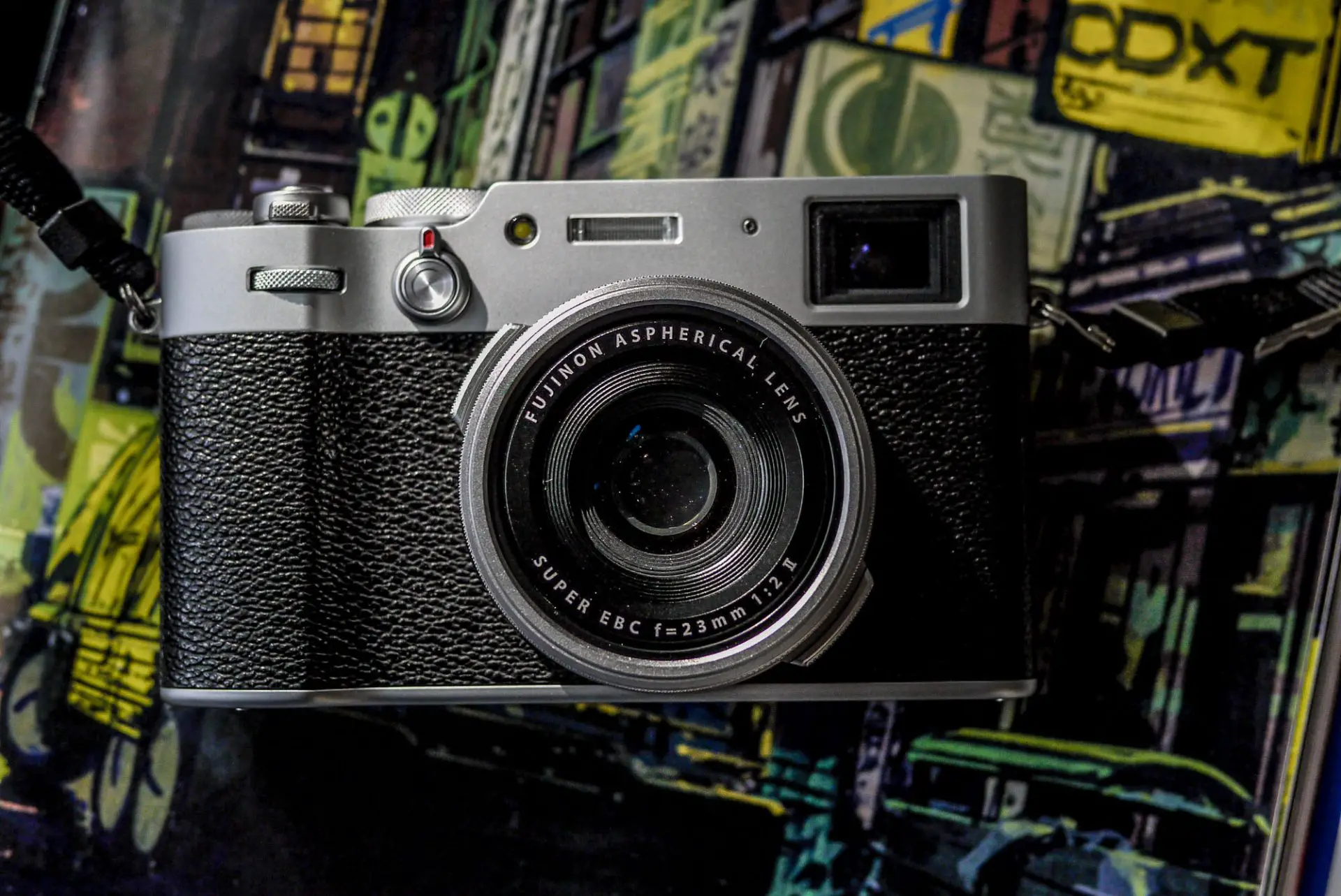








Comments
Khürt Louis Williams on 5 Frames with the Fujifilm X100V – By Thorsten Wulff
Comment posted: 04/08/2020
Comment posted: 04/08/2020
Ted on 5 Frames with the Fujifilm X100V – By Thorsten Wulff
Comment posted: 04/08/2020
Comment posted: 04/08/2020
Louis on 5 Frames with the Fujifilm X100V – By Thorsten Wulff
Comment posted: 04/08/2020
Comment posted: 04/08/2020